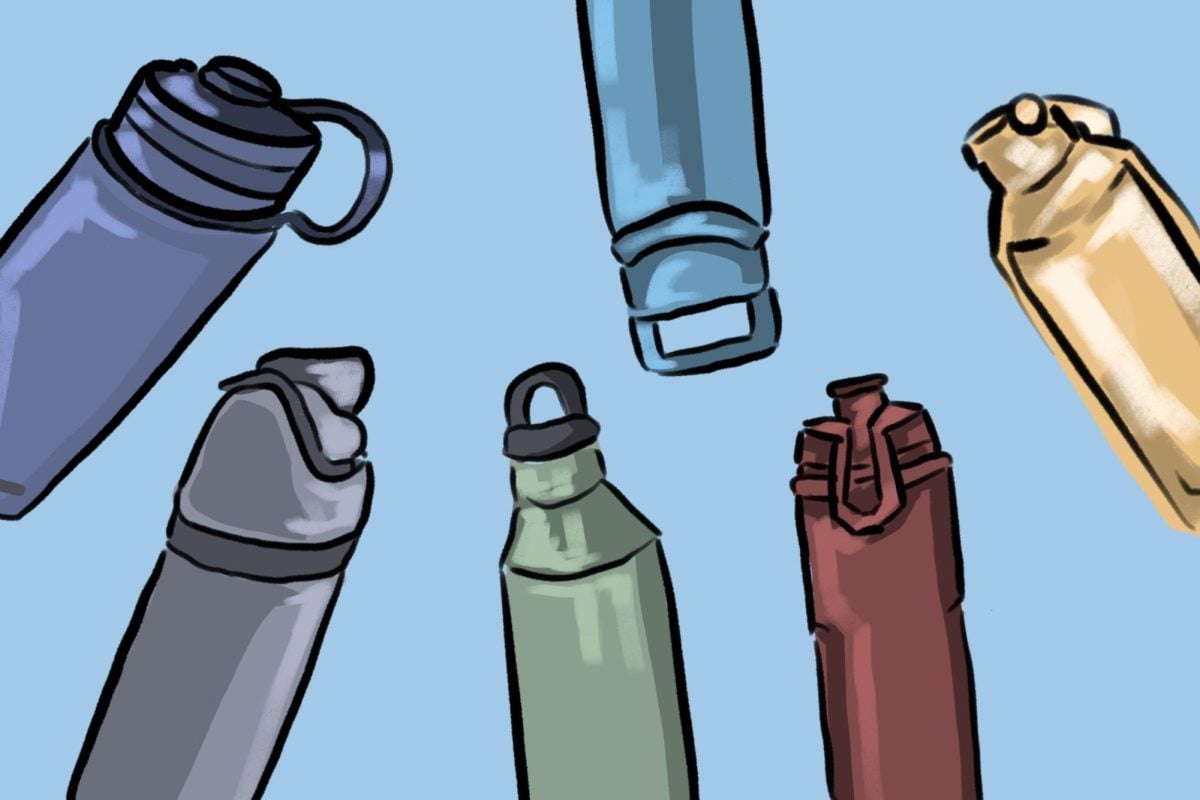Weinberg sophomore Jordyn Howard owns two Stanley cups — not the coveted hockey prize, but the sought-after drink tumbler.
After gaining traction on social media, Stanley cups have repeatedly sold out in stores nationwide. Even Saturday Night Live poked fun at the tumblers’ skyrocketing popularity in a skit called “Big Dumb Cups,” where actress Dakota Johnson cradled a human-size tumbler.
Though Stanley — the brand that makes the tumblers — has been around for over a century, its product is experiencing a recent revival in popularity. “Quencher H2.0,” its most popular water bottle, is a beverage tumbler with a straw and handle in various colors.
On campus, water bottles like the Stanley have become a sort of accessory for students.
Howard owns the 40 ounce tumbler in two colors — Rose Quartz and Pool. She’s drawn to the aesthetics of the water bottle –– she said the snazzy colors motivate her to drink water throughout the day, Howard said.
“Because it’s so big and I have it in my hand, I’m constantly reminded to drink water,” she said.
Weinberg junior Mira Brodsky owns multiple water bottles from all sorts of brands, including Yeti and Hydroflask. But, the Stanley is her favorite so far because it keeps her drinks cold, Brodsky said.
“Maybe you’ve heard the term ‘emotional support,’” Brodsky said. “I feel like (the Stanley) actually is. I drink so much more water when I have a nice water bottle.”
Howard agreed with this characterization. When she doesn’t have the water bottle with her, she feels more stressed and agitated, Howard said.
“She’s an emotional support water bottle, because water keeps me sane,” Howard said. “Also, having a Stanley makes me happy.”
Howard, who described herself as “the product of the hype,” learned about the cup through social media. Her boyfriend got her the first tumbler, after which she purchased another.
SESP sophomore Layla Zaidi said she finds the Stanley tumblers to be “overrated.” Trends like the Stanley tumblers circulate on social media platforms, which promotes overconsumption, she said.
“People want it because everyone else has it,” Zaidi said. “I don’t think they’re worth the money or the hype.”
Brodsky said though reusable water bottles are environmentally friendly, consumers should consider how many they need — or whether they are just buying into trends.
Instead of a Stanley, Zaidi owns the Owala FreeSip water bottle, which she thinks is more aesthetically pleasing than the Stanley. She appreciates the FreeSip version’s two drinking methods — a straw for sipping and another larger opening for chugging water.
Zaidi thinks the Stanley’s design is unfunctional, pointing out that water can spill out of the straw. But, as a sipper, Howard said she still enjoys the straw feature.
While some Stanley tumblers have a straw that’s exposed, Brodsky’s version has a straw that closes into the cup.
“I feel like it’s not too big. You can fit it in a backpack,” Brodsky said. “I thought it would be good (for) travel and every day.”
In January, the company also came under fire for using lead in the sealing material in the cups, after some social media users raised concerns. But the lead is underneath stainless steel, so it’s inaccessible to drinkers, according to some experts.
“From my perspective, the damage has been done,” Howard said. “I’ve been drinking out of this bottle for the better part of like six or seven months.”
Email: jessicama2025@u.northwestern.edu
Related Stories:
— Chicken soup, cupcakes, but no ironing: Meet NU students’ new mom away from home
— Northwestern plans to eliminate bottled water in three C-stores by end of academic year
— Students fawn over Sonny Angel dolls as collectorship expands among Gen Z






